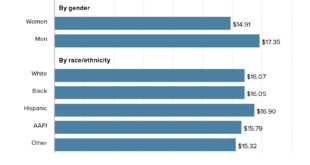 The World Bank post The high price of healthy food and the low price of unhealthy food by Derke Headey and Harold Alderman (7/23/19) explores the connection between food systems and wealth in a country, along with the impacts. For example, their graph here show a correlation between stunting in children and the caloric price of milk.
The World Bank post The high price of healthy food and the low price of unhealthy food by Derke Headey and Harold Alderman (7/23/19) explores the connection between food systems and wealth in a country, along with the impacts. For example, their graph here show a correlation between stunting in children and the caloric price of milk.
The metric we use to analyze the global food system from a consumer perspective is the “relative caloric price” of a given food. Take eggs, for example: how expensive is an egg calorie in Niger compared to the most important staple foods in that country? Egg calories in Niger are 23.3 times as expensive as a calorie from a staple food, such as rice or corn. In contrast, egg calories in the US are just 1.6 times as expensive as staple food calories.
The big picture:
Hence the problem in less developed countries is that poor people also live in poor food systems: nutrient-dense foods like eggs, milk, fruits and vegetables can be very expensive in these countries, making it much harder to diversify away from nutrient-sparse staple foods like rice, corn and bread. The problem in more developed countries is rather different: unhealthy calories have simply become a very affordable option. In the US, for example, calories from soft drinks are just 1.9 times as expensive as staple food calories and require no preparation time.
